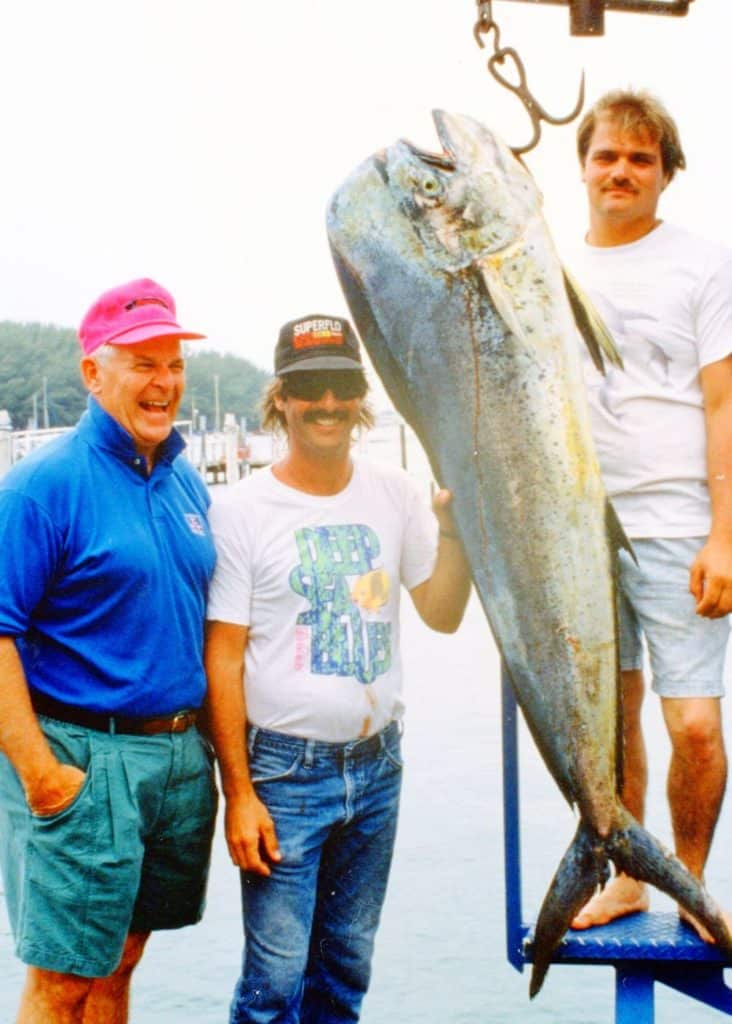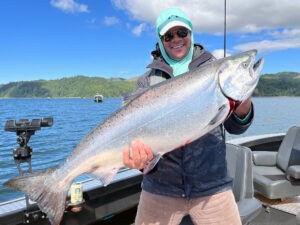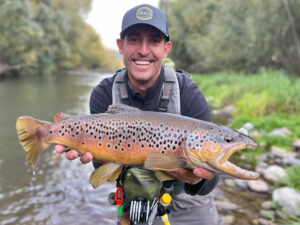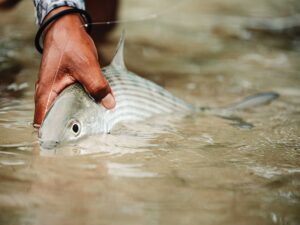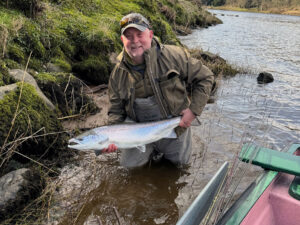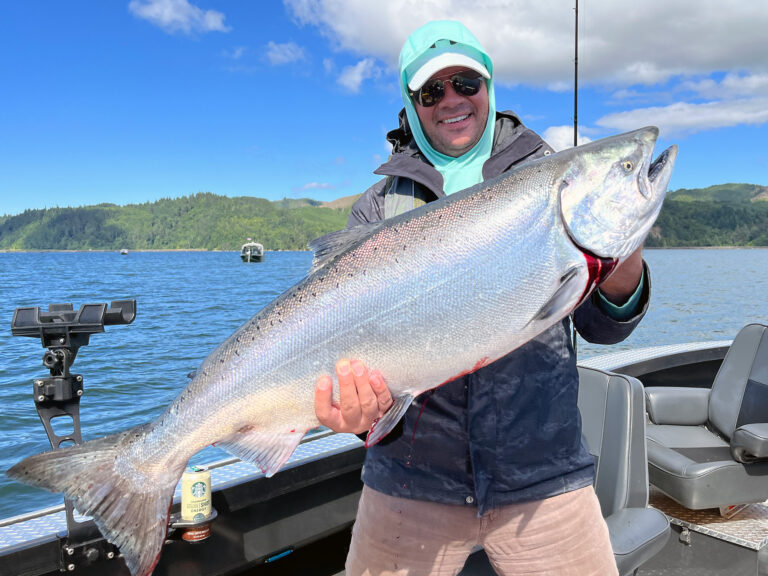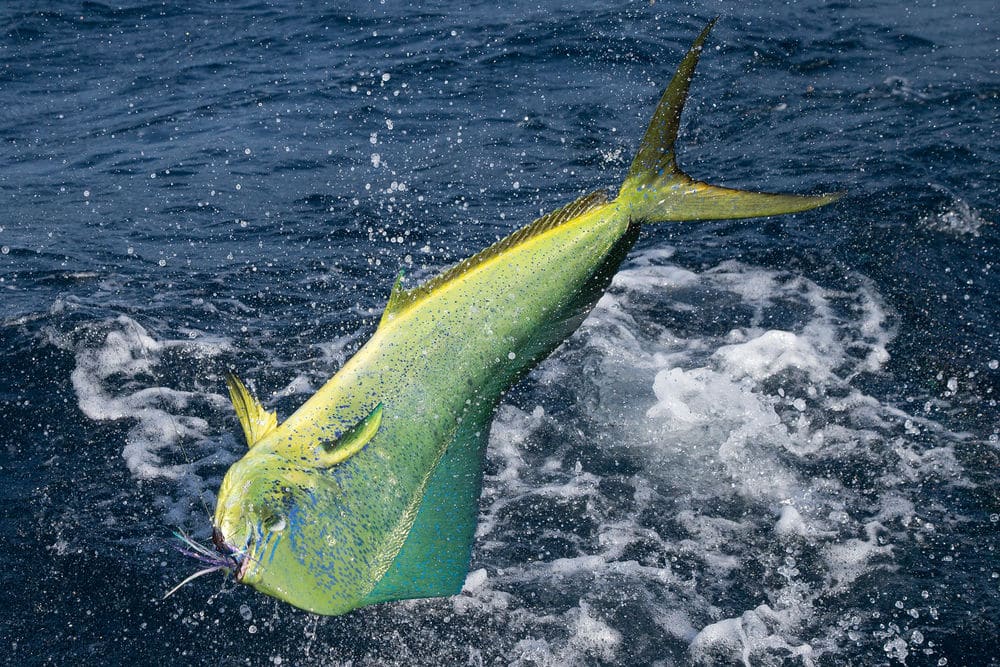
Dolphin fishing in the Florida Keys is all about the birds during the summer months.
“The large numbers of birds around during that time of the year really help us find feeding dolphin,” says Capt. Brian Cone, of Contagious Charters in Islamorada. He uses 12- to 20-pound spinning gear, depending on the size of dolphin he encounters.
The Gulf Stream delivers large amounts of baitfish to the area in May, June and July, attracting predators such as dolphin, tuna, wahoo and sailfish. “The current runs over broken bottom and humps to form reliable rips off Islamorada,” he says. “The agitated water is a prime area for dolphin to feed.”
Cone heads out to the rips, always on the lookout for surface-feeding mahi. Spotting the birds is a dead giveaway, often signaling bait schools and game fish nearby. “Dolphin are always in a feeding mode, and I love the challenge of hunting them down,” he says.
Mahi Movements
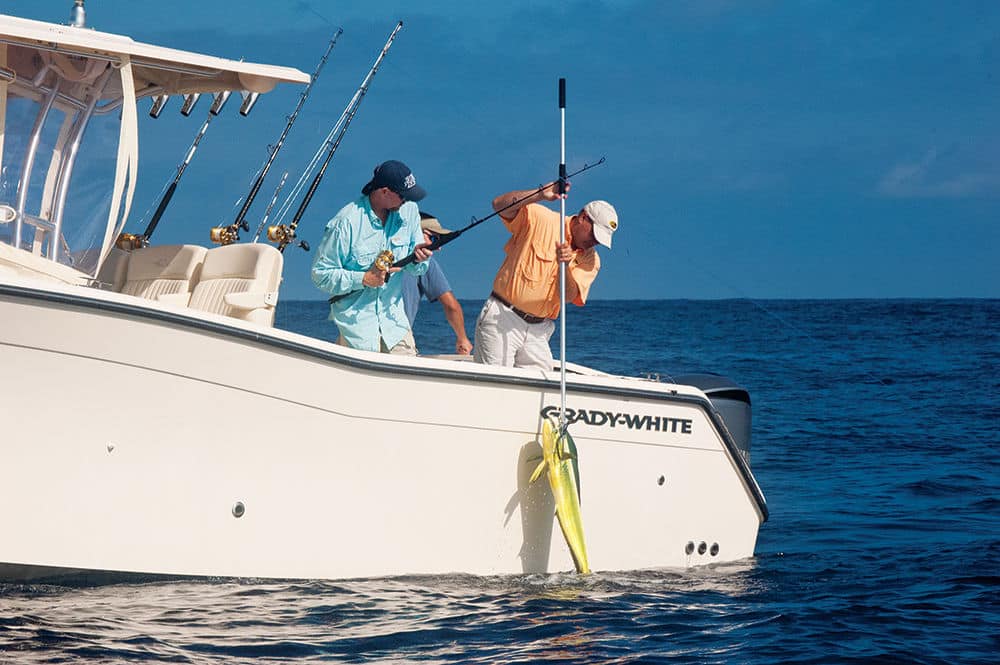
“Recaptures have shown that dolphin continuously move northward along the U.S. Atlantic coast, riding the ocean currents, and disappearing for short periods before showing up in tropical regions,” says Don Hammond, who heads up the Dolphinfish Research Program based in South Carolina. “Some individuals make a circum-Atlantic migration that encompasses 8,000 miles or more. Fish that travel to the Atlantis Canyon area off New York commonly turn southeast, traveling past Bermuda, before catching a southerly current back to the tropics.”
Dolphin schools show in the Straits of Florida off the Keys in late March and April, increasing to peak abundance during late May, June or July. Off the Carolinas, ‘phins typically reach their greatest numbers from May to June. Top fishing occurs in the Mid-Atlantic Bight from late July to early September.
“One fish swam from Islamorada, Florida, to Oregon Inlet, North Carolina — a total of 835 miles — in nine days, averaging 93 miles per day,” said Hammond. “But the most distant recovery came from the eastern North Atlantic off the Azores Islands. The fish, released off Charleston, South Carolina, traveled a distance of 2,500 miles in eight months.” Other fish tagged in the Florida Keys were recovered off New York and New Jersey in less than two months, showing that dolphin can navigate their entire East Coast range in just two months.
Why Dolphin Are Always Hungry
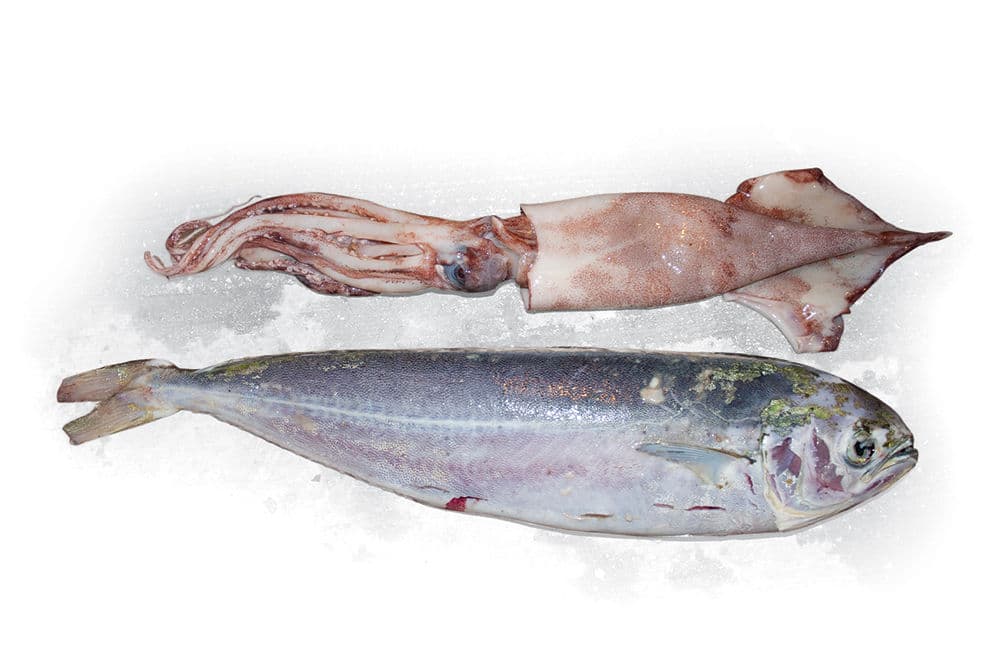
Given those well-known voracious appetites, how quickly do dolphin actually grow?
“On average, the daily growth rate of dolphin is 3 millimeters (.11 inches) a day, but this can vary considerably depending on location, season and sex,” says Greg Stunz, a professor of marine biology at Texas A&M University-Corpus Christi. “One-year-old fish range anywhere from 23 inches to 55 inches. Warmer water can increase growth rate, and one study in the Gulf of Mexico showed a daily growth rate of 4.15 millimeters (.16 inches) a day for the first year of life.”
Growth rates begin to slow after the first year, but that doesn’t stop dolphin from eating anything in sight. They feed primarily at the surface around floating structure, such as sargassum mats. All types of baitfish, squids and crabs are liable to be chomped.
A study on Pacific Ocean dorado found the average consumption rate to be 5.6 percent of their body weight per day, says Stunz. Younger, faster-growing fish have much higher consumption rates — up to 19.8 percent — compared with larger, older mahi. If a 180-pound man ate almost 20 percent of his body weight in a single day, that would be about 36 pounds.
One of the Biggest Mahi-Mahi Ever Caught in Florida
